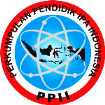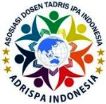The Content of Scientific Explanations Aspect in The Junior High School Science Textbooks: An Analysis on Substance Pressure Topics
Abstract
The purpose of this research is to compare the aspects of scientific explanation and identify the patterns of scientific explanation in several books. The textbooks sampled in this study were (Sample 1) Science Textbooks for junior high school grade 8th Curriculum 2013 Revised Edition 2017 published by the Ministry of Education and Culture of the Republic of Indonesia, (Sample 2) Integrated Science Books for junior high school grade 8th Curriculum 2013 published by Yudhistira, (Sample 3) Science Books for junior high school grade 8th Curriculum 2013 published by Gramedia. This research uses a qualitative descriptive approach with content analysis. The data collection technique used a document content review technique in the sample book. The validity of the data used is a confidence test, a transferability test, a dependency test, and a certainty test. For data analysis using fixed comparison method which includes data reduction, organization, categorization, synthesis, and formulating working hypotheses. From this study, it was found that the scientific explanation can only be identified if it fulfills the three main components described, namely claim, evidence, and reasoning. The three book samples have uniformity in the content of scientific explanation aspects. The three all have categories of claim only (C), claim-evidence (C-E), and claim-evidence-reasoning (C-E-R). However, the sample 1 has the greatest level of density. Its mean that the sample 1 presents the most complete scientific explanation aspects when compared to the presentation of the claim aspects. The research show that in preparing junior high school science textbooks, it is necessary to pay careful attention to the completeness of the scientific explanation aspect. This is because it is very important to facilitate this for students.
Keywords: Scientific Explanation, Science Textbooks, Substance Pressure.
Full Text:
PDFReferences
Ahmad, J. (2018). Desain Penelitian Analisis Isi ( Content Analysis ). Research Gate, 5(9), 1–20.
Arohman, M., Saefudin, & Priyandoko, D. (2016). Kemampuan Literasi Sains Pada Pembelajaran Ekosistem. Proceeding Biology Education Conference, 13(1), 90–92.
Cetin, P. S. (2014). Explicit Argumentation Instruction to Facilitate Conceptual Understanding and Argumentation. Research in Science & Technological Education, 32(1), 1–20. https://doi.org/http://dx.doi.org/10.1080/02635143.2013.850071
Driver, R., Newton, P., & Osborne, J. (2000). Establishing the norms of scientific argumentation in classrooms. Science Education, 84(3), 287–312. https://doi.org/10.1002/(sici)1098-237x(200005)84:3<287::aid-sce1>3.0.co;2-a
Fitriani, H., Djamas, D., & Fauzi, A. (2019, April). Textbook design of integrated science subject with integrated model in bio magnetic topic. In Journal of Physics: Conference Series (Vol. 1185, No. 1, p. 012072). IOP Publishing.
Hakim, R. (2019). Pengembangan Buku Teks Ilmu Pengetahuan Alam (IPA) yang Terintegrasi dengan Peradaban Islam untuk Peningkatan Sikap Ilmiah dan Pengetahuan IPA: Penelitian pada SMP/MTs di Kabupaten Sumedang Jawa Barat. (Doctoral dissertation, UIN Sunan Gunung Djati Bandung)
Langae, K. (2011). Scientific Explanation. In ARIZONA STATE UNIVERSITY.
McNeill, K. L., & Krajcik, J. (2008). Scientific Explanations: Characterizing and Evaluating the Effects of Teachers’ Instructional Practices on Student Learning. Journal of Research in Science Teaching, 45(1), 53–78. https://doi.org/10.1002/tea.20201
Moleong, L. (2014). Metodologi Penelitian Kualitatif. PT Remaja Rosdakarya.
Muliardi, M. W. R., Supeno, S., & Bektiarso, S. (2018). Lembar kerja siswa scientific explanation untuk melatihkan kemampuan penjelasan ilmiah siswa SMA dalam pembelajaran fisika. Prosiding Seminar Nasional Pendidikan Fisika, 3(1), 33–38. https://jurnal.unej.ac.id/index.php/fkip-epro/article/view/7366
Nilamsari, N. (2014). Memahami Studi Dokumen dalam Penelitian Kualitatif. WACANA: Jurnal Ilmiah Ilmu Komunikasi, 13(2), 177-181.
Osborne, J. F. (2011). Scientific Argument and Explanation A Necessary Distinction. Science Education, 95(4), 627–638. https://doi.org/10.1002/sce.20438
Pertiwi, U. D., Atanti, R. D., & Ismawati, R. (2018). Pentingnya Literasi Sains Pada Pembelajaran Ipa Smp Abad 21. Indonesian Journal of Natural Science Education (IJNSE), 1(1), 24–29. https://doi.org/10.31002/nse.v1i1.173
Sugiyono. (2013). Metode Penelitian Pendidikan Pendekatan Kuantitatif, Kualitatif dan R&D. Alfabeta.
Velentzas, A., & Halkia, K. (2018). Scientific explanations in Greek upper secondary physics textbooks. International Journal of Science Education, 40(1), 90–108. https://doi.org/10.1080/09500693.2017.1401251
Wahyu RN, E., Fathurohman, A., & MS, S. (2020). Analisis Buku Siswa Mata Pelajaran IPA Kelas VIII SMP/MTs Berdasarkan Kategori Literasi Sains. Jurnal Inovasi Dan Pembelajaran Fisika. http://fkip.unsri.ac.id/index.php/menu/1
Widhiarso, W. (2011). Melibatkan rater dalam pengembangan alat ukur. Available at SSRN 2593452. https://ssrn.com/abstract=2593452.
Yusup, F. (2018). Uji Validitas dan Reliabilitas Instrumen Penelitian Kuantitatif. Junal Tarbiyah: Jurnal Ilmiah Kependidikan, 7(1), 17–23.
DOI: http://dx.doi.org/10.24014/jnsi.v5i2.17733
Refbacks
- There are currently no refbacks.

Journal of Natural Science and Integration
E-ISSN: 2620-5092 P-ISSN: 2620-4967
Published By:
Department of Science Education, Faculty of Education and Teacher Training,
State Islamic University of Sultan Syarif Kasim Riau, Indonesia
Mailing Address:
Jl. H.R Soebrantas Km. 15 No. 155
Kelurahan Simpang Baru
Kecamatan Tuah Madani, Pekanbaru, Riau, Indonesia
Email: jnsi.tadrisipa@uin-suska.ac.id
Indexed By:
Journal of Natural Science and Integration is licensed under a Creative Commons Attribution 4.0 International License.


_-_Copyy2.png)






.jpg)
.png)
.jpg)
.jpg)




